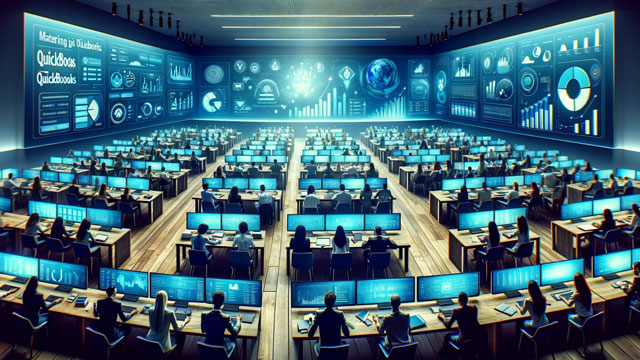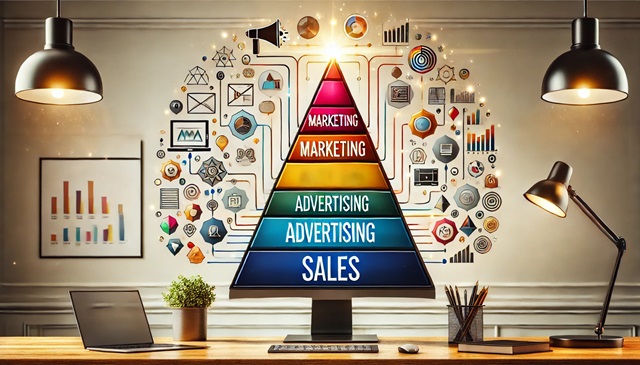A Help Desk is usually not a profit-generating department within a company. It is, for many organizations, a necessary expense, but it can add a significant amount of value to a company in a variety of ways. In order for your Help Desk to add this value, it must be established with the proper mission, it must offer the right set of services, and it must achieve its objectives. In this article, we will start with these fundamentals in order for you to implement an effective Help Desk.
Before we begin to discuss what comprises an effective Help Desk, it will help to examine an ineffective one. Consider a scenario where an employee in your company calls you to borrow a computer and a projector for a presentation. This is the first time you are receiving such a request, and you certainly do not want to say no to a customer. Customers do not necessarily always have to be outside customers; when you run a Help Desk, internal employees in your own organization are your customers, too. So when this request comes in, you find some equipment that isn't currently being used and you wait for the employee to pick it up.
The employee is annoyed to find that the computer does not have the required software for her presentation, and the projector will not work with this particular computer. While other, more important issues are going unresolved, you hurry to install the required software. When you are eventually finished with this particular customer, you try your best to get to other calls, but you find that most of your customers are annoyed for having to wait for so long.
The next time someone calls you to borrow equipment, you have learned your lesson and you say that you do not provide such services. But, in the process, you have now made yet another customer unhappy.
In order to run an effective Help Desk, you must know, in advance, what services you are going to perform, you must know how to prioritize issues, and you must create realistic expectations. The example illustrated above reveals a common set of mistakes that many new Help Desks encounter -- most notably, a lack of a plan. All successful companies start off with a business plan, and the same rule applies to Help Desks. If your Help Desk is focused and has a clear understanding of your business, it will add a significant amount of value to the company in the form of increased productivity.
As any project manager knows, the first rule of any successful project is to earn the support of a sponsor. In this case, the senior management of an organization would be the sponsors of starting any major endeavor, including the establishment of a Help Desk. Since Help Desks are usually an expense of the company, getting senior management's support is crucial. More importantly, though, you must also clearly understand what senior management expects of you. You never want to be in a situation where you are, for example, offering unnecessary services - especially if the budget in your company is closely watched.
Senior management sets the agenda and objectives of a company. They know the needs of the business – including the need for support. A Help Desk's fundamental objective is to support the organization. When you are creating your plan for your Help Desk, managers' input will be vital to understanding what services you should include.
If budgets are tight, for example, senior management might ask you to include as much automation as possible in your procedures. It should be noted here that you will take direction on all aspects of your Help Desk's plan from senior management.
The types of feedback you might receive from management will vary, depending on a variety of factors. You might, for example, be told that you can outsource any service that might be better performed by an outside company. In some organizations, outsourcing might be strictly prohibited. Similarly, some automation might be called for by some companies, whereas others might want to emphasize more human intervention. You will take direction from management for all of these types of decisions.
In addition to management, you will also be working closely with other Information Technology (IT) departments within your company.They can be a source of help in many instances, and in others they can be challenging.
Your Help Desk will share many things in common with other IT groups. For one thing, you are both responsible for keeping technology products functioning correctly. But, the most prevalent causes of conflict with other IT groups usually deal with levels of responsibility. The IT department might, for example, claim that certain duties or services are their responsibility, and they will request that you stop offering certain services. Alternatively, they might also try to push undesirable duties off on the Help Desk, when they do not want to be bothered with them. An effective Help Desk's plan will clearly outline its level of services to avoid such conflicts.
Your Mission
A mission statement outlines your purpose, whether it is a mission statement for the entire company, a department, or your Help Desk. For Help Desks, a mission statement helps develop a strategy for dealing with customers. Some characteristics of a mission statement are: It must be believable, achievable, and recognizable.
Your Services
Building Your Customer Profile
Most experts agree that the most fundamental rule of business is to know your customer. This tenet is especially true for Help Desks. You will want to know who you will be supporting. One of the primary goals of your Help Desk is to make your customers more productive.
Some of the characteristics of your customers you will want to know include:
-
Who are they?
-
How many of them will require my services?
-
What technology do they use, and how often do they use this technology?
-
How much experience with technology do my customers have?
-
What type of environment do they work in?
-
What do they want from a Help Desk?
We will look at some of these questions in more detail to help you build your customer profile.
Who are your customers? The answer to this seemingly simple question might surprise you. If you are a Help Desk that will offer services to a wide geographical area, for example, it is likely that you will encounter support calls from people who are using a very wide range of technology. You might have very little interaction with certain customers, for example, because they are using outdated technology, or they might not have required a high level of service.
One of the most important reasons for knowing who your customers are is to be able to market your services to them. You must be able to reach them through your marketing efforts; they need to know what services are available.
Your budget is an important concern when you run a Help Desk. If you do not know your customers well, you risk wasting money. If you receive a call from a customer you do not know well, who has a support issue that involves technology that is unfamiliar to you, you will potentially spend a good deal of money to fix their problems. This expense can – and should – be avoided.
If you are a technology Help Desk, virtually every PC user is a potential customer. If your company uses Asset Management software (which we will discuss in a future chapter), your software will be able to find most, if not all, of these PCs. But, if you have non-networked PCs, you might have to work a little harder to create a list of all of these PCs, or potential customers. Knowing how many customers you potentially have will help you to create a budget, which is one of the most important concerns for your Help Desk.
Most customers are not concerned with the details of the technology they use. They do not, for example, know why more memory in a computer will make it run faster, or how a computer processes information. They do not want – or need – to know how their products work. But, they want them to work in order for them to do their jobs. Like you, they are probably working under tight deadlines and a tight budget. This can be a source of frustration for some Help Desk employees. Help Desk technicians will sometimes wonder why employees do not want to hear explanations of why their equipment is not working. The important thing to remember is that it is not your job as a Help Desk technician to offer lengthy explanations; your job is to offer support and fix problems.
While your customers might not care about how computers or technology work, you must care and you must be knowledgeable. The infrastructure of a company's technology – the network, the computers, the wiring, the servers, etc. – is called the "environment." The Help Desk must know the environment it is serving.
How Often Do They Use This Technology?
What time of the day will your Help Desk be in business? Do you support customers in one building or around the globe? Do your customers tend to work overtime or after normal business hours? These are all important questions to ask in order to build a customer profile.
The staffing levels on your Help Desk will likely change throughout the day. You may receive fewer calls in the late afternoon, but you might receive many calls first thing in the morning. As your Help Desk grows, you will closely monitor these trends to be able to staff your Help Desk appropriately. This is especially true if you are going to run a 24-hour Help Desk. It will be crucial to know the right number of people required to deliver the level of service you want to give.
In addition to changes in staffing levels throughout the day, you might have changes in staffing needs during certain times of the month. An accounting firm, for example, might have a greater need for services at the end of the month, when they are trying to close out their company's monthly financial records. At very high-demand times, you might consider charging extra for your services or outsourcing your service needs.
How Much Experience With Technology Do My Customers Have?
The level of expertise your customers have with technology is very important. It will determine what level of services you need to deliver, and it will also determine what types of employees you will need to hire to deliver these services. Do most of your customers perform the same repetitive tasks over and over again, and do they tend to panic if the smallest thing goes wrong? If so, you will need an entirely different set of employees than a Help Desk that offers services to a more technologically advanced customer base.
Some of your customers will need more attention than others. You will need to know this in advance of opening your Help Desk, so that you can help them appropriately. For customers who are often uncomfortable with technology, it might be in your best interest to offer training to these customers. Training is a service that is provided by many Help Desks – and this training can help reduce your expenses by cutting down on support calls.
What Do They Want From A Help Desk?
Knowing your customers' priorities can help you in many ways, including saving you money, time, and frustration. Listen to your customers when they tell you what is important to them. If they are not telling you what their priorities are, you must ask them. Before you develop strategies for delivering services you think are necessary, make sure your customers agree they are high priorities.
When you are in a business that delivers support, you want to deliver the most support possible that will have a big impact. Your customers will tell you what they value most – and when you support them in these areas, you will achieve big results.
































